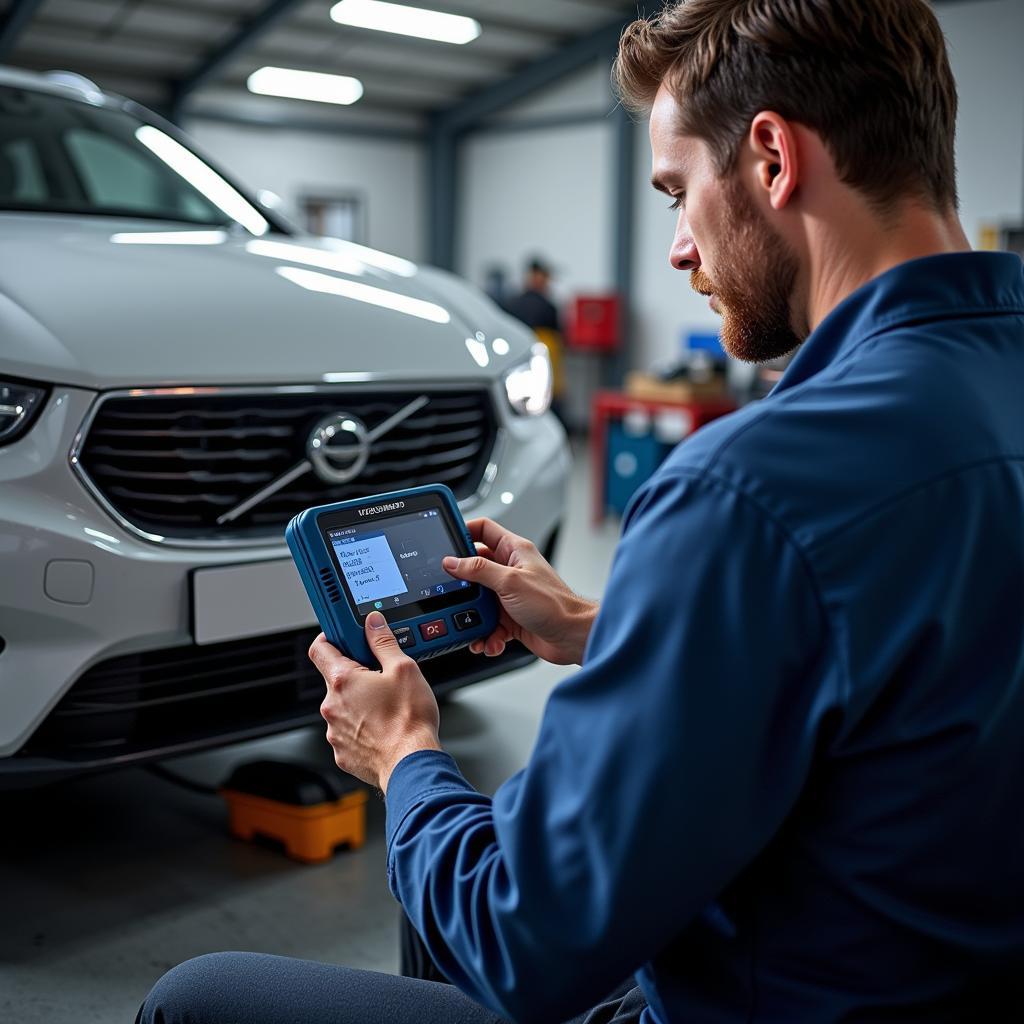The smart brake support warning light on your dashboard can be a cause for concern, but it doesn’t always mean a trip to the mechanic is necessary. This comprehensive guide will walk you through understanding what triggers this warning light, how serious the issue might be, and what steps you can take to address it.
Understanding Smart Brake Support Systems
Modern vehicles are increasingly equipped with advanced driver-assistance systems (ADAS) designed to enhance safety and prevent accidents. Smart Brake Support (SBS), sometimes referred to as Automatic Emergency Braking (AEB) or Forward Collision Warning (FCW), is a crucial component of ADAS. This system uses sensors, typically cameras and radar, to monitor the distance between your vehicle and the one in front. If the system detects an imminent collision risk, it will provide visual and audible warnings to the driver. If the driver doesn’t react in time, the system can automatically apply the brakes to avoid or mitigate the impact.
Common Reasons for the Smart Brake Support Warning Light
While the SBS system is designed to enhance safety, several factors can trigger the warning light:
- Sensor Obstructions: Dirt, debris, snow, or ice covering the sensors can interfere with their ability to accurately detect obstacles.
- System Malfunction: A faulty sensor, wiring issue, or software glitch within the SBS system can cause the warning light to illuminate.
- Environmental Factors: Heavy rain, fog, or bright sunlight can temporarily affect the sensors’ performance, leading to a warning light.
- Low Battery Voltage: A weak car battery can disrupt the proper functioning of electronic systems, including the SBS.
- Aftermarket Installations: Recently installed aftermarket accessories, especially those near the sensors (like bull bars or license plate frames), can obstruct their view and trigger the warning.
 Mechanic Inspecting Car Sensors with Diagnostic Tool
Mechanic Inspecting Car Sensors with Diagnostic Tool
Diagnosing the Problem
When the smart brake support warning light comes on, it’s essential to determine the underlying cause to take appropriate action. Here’s a step-by-step approach:
- Check for Obvious Obstructions: Inspect the front of your car, paying close attention to the area around the sensors (usually located on the grille or behind the windshield). Clean any dirt, snow, or ice that might be obstructing their view.
- Consult Your Owner’s Manual: Your car’s manual will provide specific information about the SBS system, including potential causes for the warning light and recommended actions.
- Use an OBD-II Scanner: An On-Board Diagnostics (OBD-II) scanner, a handheld device that plugs into your car’s diagnostic port, can read trouble codes stored in the vehicle’s computer. These codes can pinpoint the source of the problem, such as a specific sensor malfunction.
What to Do When the Smart Brake Support Warning Light Comes On
- Stay Calm and Assess: If the warning light illuminates while driving, don’t panic. Maintain a safe speed and distance from other vehicles.
- Pull Over Safely: If possible, find a safe place to pull over and turn off the engine. Restarting the car might temporarily resolve the issue, especially if it’s related to a minor software glitch.
- Check Your Surroundings: The SBS warning light might be a genuine alert. Ensure there are no obstacles or vehicles in your immediate vicinity.
Seeking Professional Help
If the warning light persists after trying the above steps, it’s crucial to consult a qualified mechanic specializing in automotive electronics and ADAS systems. They can perform a comprehensive diagnosis, identify the root cause, and carry out necessary repairs or software updates.
Smart Brake Support Warning Light: FAQs
Q: Is it safe to drive with the smart brake support warning light on?
A: While you may still be able to drive, the SBS system might not function correctly, increasing the risk of a collision. It’s crucial to address the issue promptly.
Q: Can I fix the problem myself?
A: Simple fixes like cleaning the sensors or checking the battery can be done at home. However, more complex issues require professional expertise and specialized tools.
Q: How much does it cost to fix a smart brake support system?
A: The cost varies depending on the specific problem and the make and model of your vehicle. Sensor replacement, for example, can range from a few hundred to over a thousand dollars.
Conclusion
The smart brake support warning light is a crucial safety feature in modern vehicles. While it can be triggered by minor issues like sensor obstructions, it’s essential to take the warning seriously and investigate the cause promptly. mazda 3 smart brake support warning light By understanding the system, recognizing potential problems, and taking appropriate action, you can ensure your vehicle’s safety features are functioning correctly, keeping you and others safe on the road.

